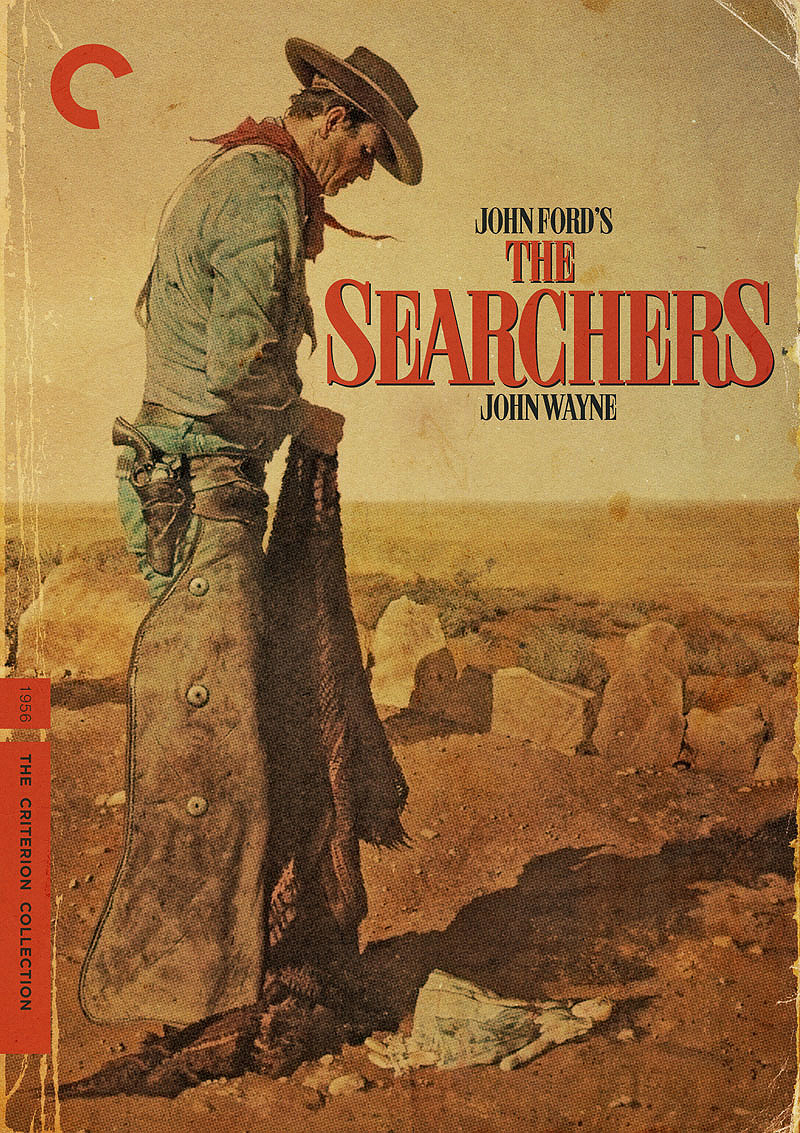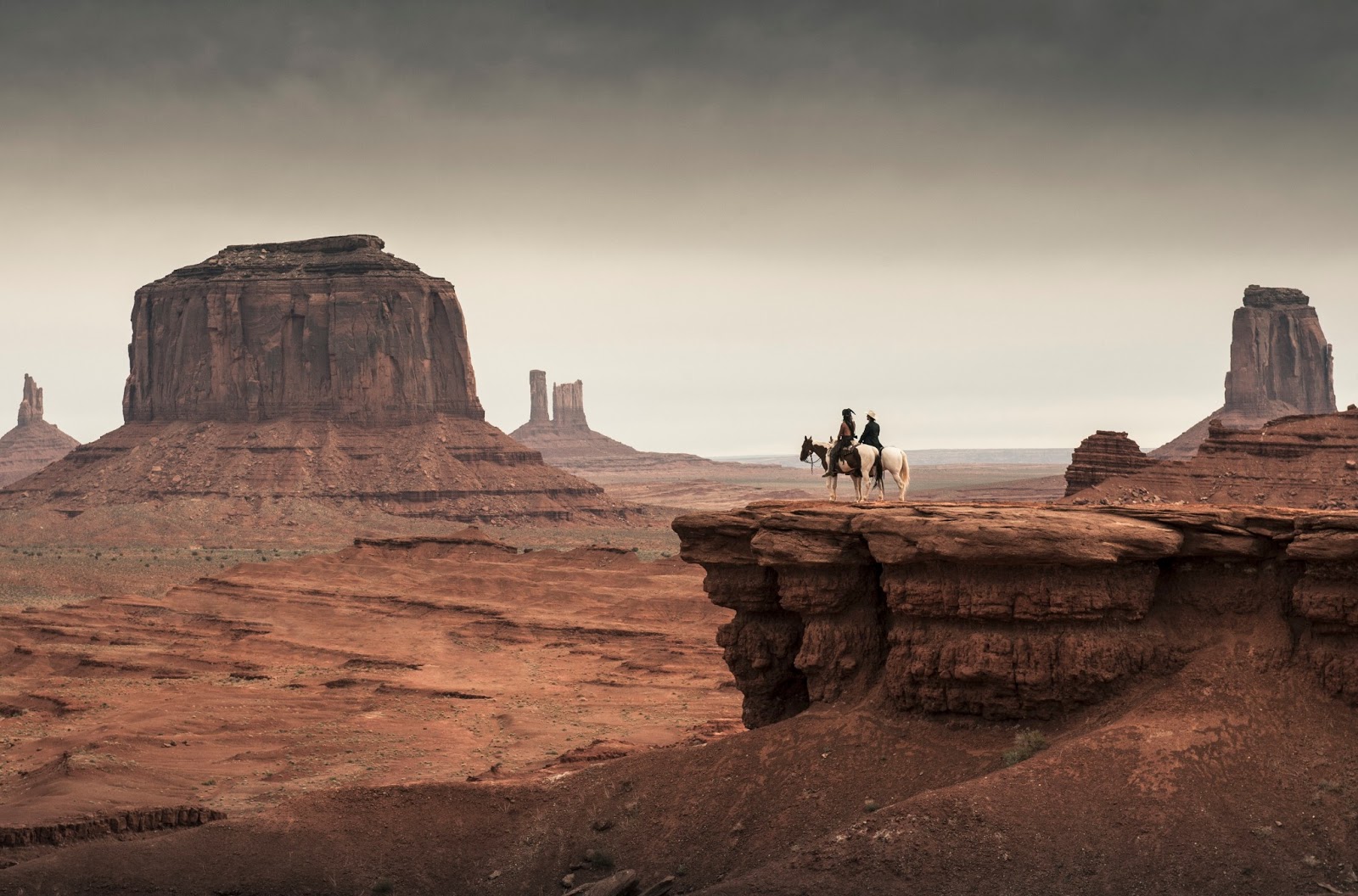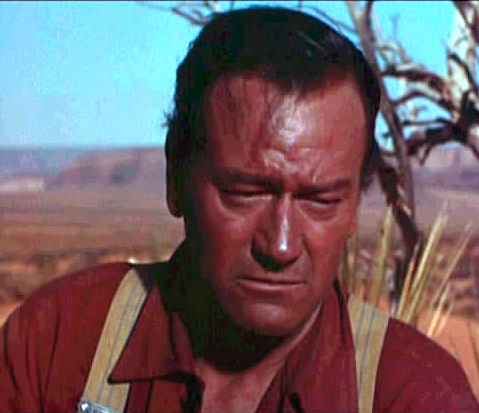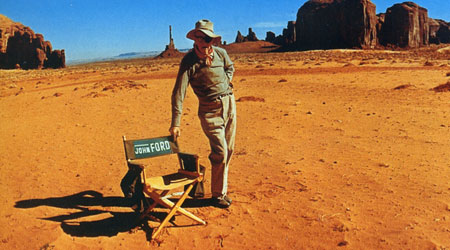‘The Searchers’ (1956)
After much anticipation I took myself off the Dendy on the Harbour to see ‘The Searchers’ on the wide screen. Wow! I expected that at two+ hours it would drag now and then, but no. The lights went down — and mercifully we were spared Val Morgan’s assault on intelligence — and the titles started. There in the darkened theatre the mythic events and characters came to life. Roger Ebert said a movie is a machine for empathy. Click went the machine.
‘The Iliad’ with the doomed Achilles, ‘The Odyssey’ with the bedevilled Odysseus, and ‘The Searchers’ with the haunted Ethan Edwards are each epics of endurance but also of self-realization. Each is a man of war whose role in peacetime is uncertain, precarious, and unhappy. But each is needed in times of war.

What can be said about ‘The Searchers’ that needs saying, or has not already been said many times? Film schools have dissected its technical aspects, deep focus, Vista Vision, the framing shots, the comic interludes, filming the horseback chases, the terse screenplay, and more that I do not fathom. I am even more sure that Cultural Studies aliens have parsed it into an empty husk in more than one PhD dissertation, burying it under polysyllabic barbarianisms to prove to each other how smart they are. The pygmies must have their days.
Yet it remains on any informed list of great films and at the top of its genre, the Western. ‘Shane’ (1953) is so elegiac it is hard to watch without choking up, and there is no greater moral lesson than ‘High Noon’ (1952) or ‘The Unforgiven‘ (1992), and a personal favourite is the laconic ‘Comes a Horseman’ (1978) or the profound ‘The Misfits’ (1962), not to mention Ford’s own cavalry trilogy. All are excellent and so are many more, ‘Lonesome Dove’ (1989). ‘Ride the High Country’ (1962) but they are second to ‘The Searchers.’ To the reader who has never seen ‘The Searchers,’ what can be said?
First, the film has pace. At nearly two hours, it is long, but the pace keeps an audience engaged, as I rediscovered.
Second, it offers the remarkable landscape of Monument Valley and the Grand Tetons. For the geographically deprived, Monument Valley looks just like its name, a flat, red plain with soaring rock monoliths, while the Grand Tetons are mountains that rise from a high grassy plain without foothills of any kind. (We spent a few days in both some years ago, and they still look just like that.)
 I stood on this very ledge once upon a time.
I stood on this very ledge once upon a time.
Third, there is the cast of characters from John Ford’s stable, each supporting actor getting face time, and some memorable dialogue. Today supporting actors might as well be CGI.
The natural and social context is rich then in place and people.
Four, the Indians are allowed an integrity not seen again in Westerns until Ford’s ‘Cheyenne Autumn’ (1964). The whites fear and hate the Indians for good reason in this world, and vice versa. This is a clash of equals who are enemies.
Fifth, there is the moral tale of redemption as Ethan Edwards, whose hate knows no bounds, whose disappointments are innumerable, whose future is bleak, whose past was bitter hardship and defeat, finds the little remaining humanity he has, much to his own surprise. Some of the close-ups of John Wayne’s expression of hate are works of art.

The most powerful one I could not find on the web. That is when he looks back at the crazed women captives at Fort Robinson. It delivers a silent jolt of hatred that foreshadows all that is to come.
This Wayne character is an unpleasant and twisted man, not the anodyne hero he often played. Added to that is the flat voice only he could ever do.
Ethan has one moment of pathos, yet he has no future, ergo the last scene when from the doorway he turns away. This Achilles has no place in an ordered society. He knows that even if no one else does. It is a moment of self-consciousness worth seeing, made the more powerful without either a close-up or a comment. Understatement, thy name is no longer Hollywood.
The story is simple, as epics are. A Comanche raiding party carries away a young girl and the Texicans pursue it. The going is hard, and in time most of the pursuers give up, but not Ethan for whom the pursuit becomes an addiction that gives his miserable life meaning. This man who has lost so much, will not accept another loss. That obsession transmutes into blaming the victim, and when the opportunity comes to rescue the girl, well, there is a moment of profound hesitation and doubt, which is beautifully realised by the camera, the dialogue, the director, the actors, as if for a moment they were all elevated to a higher plane to produce a masterpiece. In this scene, as elsewhere, Director Ford cut lines of dialogue and relied on the actors and camera to tell the tale. All this is silently observed by the vastness of nature broken by a single line of dialogue: ‘Let’s go home.’
The pygmies find much to fault. The cast is replete with the stock characters of westerns. The subplot involving a romance is not well integrated. As there are stock characters, so there are stock events and incidents, a dance, a fist fight, etc. One part of the film is Ethan’s gruelling quest played out against the social context back home. In joining the two, Ford perhaps made the former acceptable to audiences by reassuring them with the latter. Maybe the combination also satisfied him, too. It certainly satisfied Homer because he juxtaposed Ithaca with the war at Troy.
Those who are easily satisfied can hang the label ‘racist’ on Ethan and leave it at that. Ethan does hate, and these Indians have done much to earn his enmity, and vice versa, but Indians are also shown as majestic, insightful, good humoured, and with a nearly divine endurance. The only reprehensible character in the film is the store-keeper Jerem Futterman.
It is a movie that has a coherent screen play complemented with some very astute camera work to punctuate the story, and then there are Ford’s veteran actors who know what to do and how to do it. Though it does lack one of his usual features, namely a chorus to note silently the futility of it all. The assembly of the family on the porch at the initial homecoming is a near example, as are the Comanche women lined up when the Mexican trading party enters. But neither shot is held, nor is there any obvious emotion.
 John Ford on location in Momument Valley
John Ford on location in Momument Valley
That dean of movie reviewers Roger Ebert used words like magnificence, unforgettable, influential to describe it. Though it is clear to this reader Ebert was gun-shy of praising the film too much for fear of eliciting rants from the pygmies. On You Tube there is a comment on the film from Martin Scorsesse who styles Ethan Edwards a ‘poet of hatred.’
Perhaps one day, Hollywood will butcher this one, ah, remake it. How would that go? Scar will be an innocent victim, and will be played by … Angelina Jolie. Like it so far? The Rupert Murdoch’s cavalry will kidnap Scar’s little brother played by Johnny Depp, using his Tonto make-up which hides the white spots on his face. Angelina can lead a band of Amazons to abstract Johnny from the clutches of the villainous general played by … Ron Howard! Is this gold, or what!
